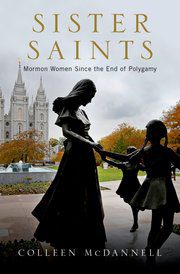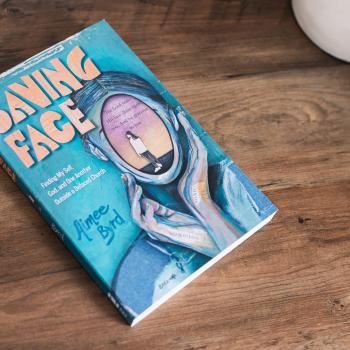“American religious history is women’s history,” Ann Braude argued in an essay published nearly two decades ago. She pointed to a fundamental problem with the field. Most churchgoers throughout most of American history have been women, yet most historians narrate the history of men. Most leaders have been men, and archives are full of sources written by and about men. Even those scholars who have observed the imbalance in the pews, Braude noted, have reflected more on the absence of men rather than on the presence of women.
 The Church of Jesus Christ of Latter-day Saints has been a partial exception to the phenomena identified by Braude. According to the 1926 U.S. Census of Religious Bodies, the Church had 250,021 male members and 249,107 female members. In the same census, the Southern Baptists had 76 male members for every 100 female members, the Methodists 70, and the northern Presbyterians 69. In more recent decades, though, a “gender gap” among Latter-day Saints has emerged and widened. Especially in Utah, female Latter-day Saints now significantly outnumber their male counterparts.
The Church of Jesus Christ of Latter-day Saints has been a partial exception to the phenomena identified by Braude. According to the 1926 U.S. Census of Religious Bodies, the Church had 250,021 male members and 249,107 female members. In the same census, the Southern Baptists had 76 male members for every 100 female members, the Methodists 70, and the northern Presbyterians 69. In more recent decades, though, a “gender gap” among Latter-day Saints has emerged and widened. Especially in Utah, female Latter-day Saints now significantly outnumber their male counterparts.
Still, even if there has been less of a gender gap among the Latter-day Saints than among many other movements, there has certainly been a gender gap in the writing of Mormon history. In the Latter-day Saint case, there is no shortage of archival sources about nineteenth-century women. Quite the contrary. The Church History Library has a limitless supply of women’s letters, diaries, and autobiographies. There are other fascinating sources, such as the minutes of the Relief Society in Nauvoo. Because of plural marriage, it would be difficult for most historians to narrate the nineteenth-century history of the Church without at least discussing women.
At the same time, men have dominated the narrative. Perhaps this is not surprising in a church founded on the belief in latter-day (male) prophets, beginning with Joseph Smith. It is easy to use the dates of church presidents as a sort of chronological principle for organizing the history of Mormonism. As long as church history is institutional history, the history of a church’s male-led institutions will privilege the voices and experiences of men over those of women.
For decades, though, historians have been recovering and privileging the voices and experiences of Latter-day Saint women. Scholars such as Maureen Ursenbach Beecher and Jill Derr made signal contributions to this work beginning in the 1970s. More recently, the Church History Department has published a series of volumes on Women of Faith in the Latter Days and hired a significant cohort of historians to continue work in this vein.
Two recent books, moreover, represent a landmark in historical writing about Latter-day Saint women. Published in 2017, Laurel Thacher Ulrich’s House Full of Females richly chronicles the lives of nineteenth-century Mormon women, making use of the wealth of sources available at the Church History Department. In her telling, Mormon women frequently defied the expectations of husbands, church leaders, and other Americans in their “willingness to push against the grain.” She found deeply rooted traditions of spiritual leadership in women who presided over meetings, anointed the sick, prepared bodies for burial, and ran public health campaigns. Ulrich also narrated the diverse experiences of women within polygamous families. While she leaves no doubt (at least in my reading) that plural marriage was a colossal mess, she also explains why and how women stuck with their church and husbands despite their trials.
Colleen McDannell’s Sister Saints: Mormon Women Since the End of Polygamy is the perfect complement for Ulrich’s book. McDannell’s is a widely ranging book with many virtues. She, too, gives something of a place of privilege to women who pushed against the grain, but she also explores “how Mormon women have resisted being pushed out of traditional domestic roles. Antifeminism belongs in a book about modern Mormon women as much as feminism does.”
That wide lens serves McDannell well throughout her book, as do her points of comparison with the broader story of religion in modern U.S. History. For instance, drawing on Julie Neuffer’s prize-winning book, McDannell tells the story of Helen Andelin, whose Fascinating Womanhood (1965) served as inspiration for evangelical author Marabel Morgan’s Total Woman. Andelin recommended that women dedicated themselves not only to their homes, but in particular to their husbands. A wife should feed her husband dinner and feed his ego. McDannell also carefully constructs conflicts over the ERA and, more recently, the question of women’s ordination. In both instances, she describes them as conflicts among Mormon women.
Perhaps most remarkably, McDannell chose to broaden her lens beyond the United States, out of a recognition that most Latter-day Saints live beyond its borders. She went to South Africa and southern Italy to conduct field work, namely interviews with Mormon women in those places. McDannell also draws on oral interviews housed at the Claremont Colleges Library and at BYU.
What most impresses me about McDannell’s analysis of international Mormonism is her determination to place it within a larger context. “The growth in Mormonism,” she writes in a bibliographic essay, “needs to be understood within the context of the growth of ‘global’ Christianity, especially in the Southern Hemisphere.” Here Mormonism grows alongside evangelical and Pentecostal Christianity. How can very different Christianities — Witnesses, charismatic forms of Catholicism, Adventists — thrive in the same places? “All of these communities,” she writes, “offered intense experiences of God, often accompanied by miraculous healings. The men drawn to these churches were told to support their families, curtail their drinking, and respect their wives.” How do the Latter-day Saints fit into this story? McDannell explains that “unlike congregations that flourished precisely because they were rooted in local customs and leadership, Latter-day Saints offered the appeal of something different.” They “signaled” that one belonged to an international organization, given local expressions of Mormonism the heft of central priesthood leadership. I could read a whole book on this subject!
In the broader field of American religious history, we are living in a golden age of outstanding scholarship and books. This is certainly the case when it comes to scholarship on the history of Sister Saints.













